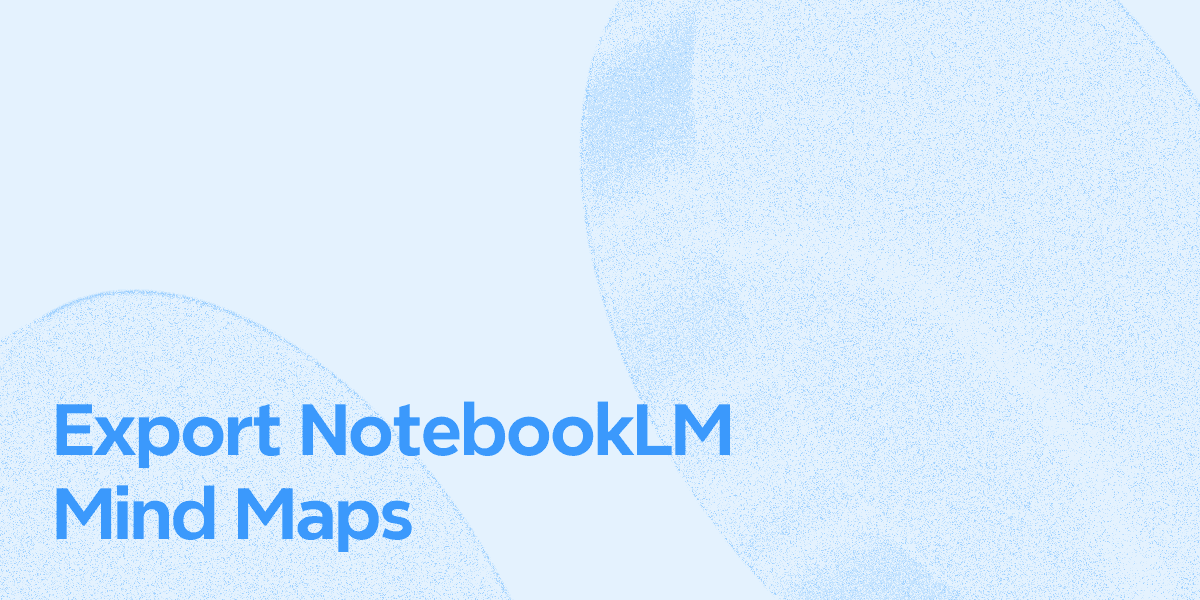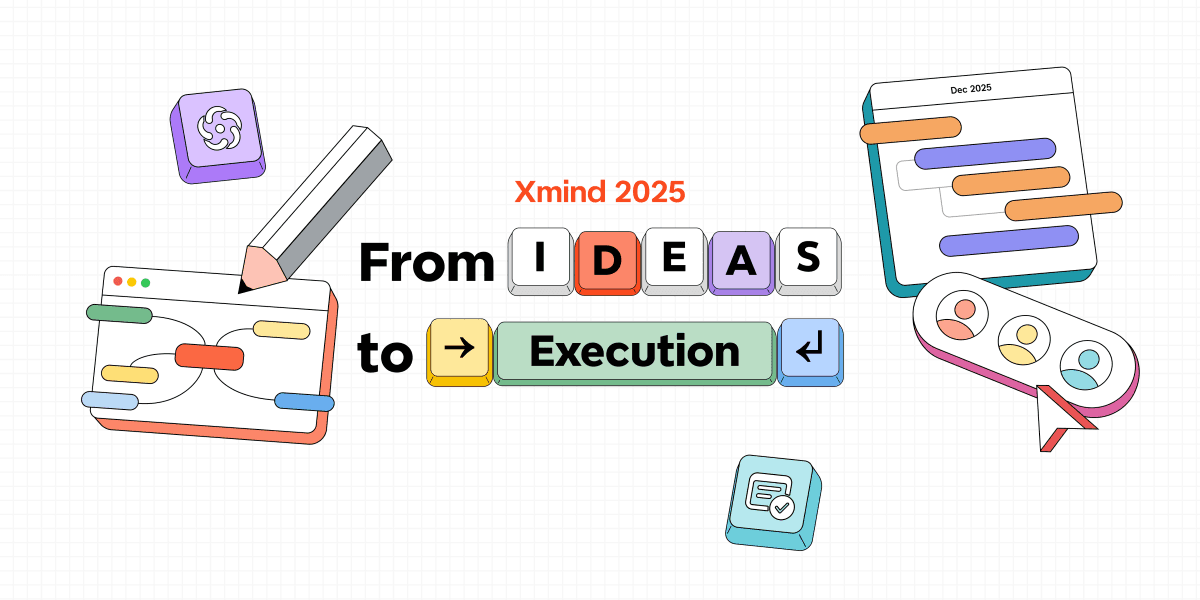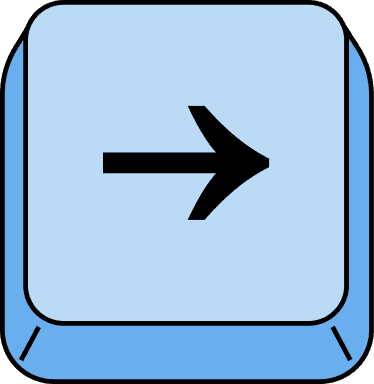12.09.2025
Warum das Wasserfall-Projektmanagement auch 2025 noch funktioniert
Seit Jahren werden Gespräche über Projektmanagement von Agile und Scrum dominiert. Dennoch hält das Wasserfall-Projektmanagement trotz des Hypes weiterhin seine Position — besonders in Branchen, in denen Ordnung, Vorhersehbarkeit und Präzision nicht beeinträchtigt werden dürfen.
Dieser Artikel beleuchtet näher, was Wasserfall wirklich im Jahr 2025 bedeutet, durchläuft seine sechs klar definierten Phasen, vergleicht es mit Agile und untersucht, wie Werkzeuge wie Xmind dieser altbewährten Methodik neues Leben einhauchen.
Was ist Wasserfall-Projektmanagement im Jahr 2025?
Definition und Kernprinzipien
Im Kern ist Wasserfall-Projektmanagement ein schrittweiser Ansatz, bei dem der Fortschritt linear abwärts verläuft. Jede Phase muss vollständig abgeschlossen sein, bevor die nächste beginnt, was Struktur gewährleistet und Mehrdeutigkeit minimiert.
Seine Hauptprinzipien umfassen:
Streng definierte Phasen.
Umfassende Dokumentation in jeder Phase.
Minimale Überschneidung zwischen den Phasen.
Klar definierte Freigaben, bevor weitergearbeitet wird.
Warum es heute noch relevant ist
Im Jahr 2025 bleibt Wasserfall unverzichtbar in Projekten, bei denen Sicherheit, Compliance und Kostenkontrolle oberste Priorität haben. Stellen Sie sich den Bau eines Krankenhausflügels, die Einführung nationaler Verteidigungssoftware oder das Design medizinischer Geräte vor — jeder Fehler im Prozess kann enorme Folgen haben.
Die 6 Phasen des Wasserfall-Methoden-Projektmanagements
Das Wasserfallmodell basiert auf sechs verschiedenen Phasen. Jede hat eine spezifische Rolle, um sicherzustellen, dass Projekte im Plan und im Rahmen bleiben. Lassen Sie uns diese aufschlüsseln.
1. Anforderungserfassung
Die Reise beginnt mit Klarheit. In dieser Phase arbeiten Beteiligte zusammen, um zu definieren, wie Erfolg aussieht. Teams dokumentieren Geschäftsziele, Benutzererwartungen und technische oder rechtliche Einschränkungen.
Stellen Sie sich ein IT-Projekt der Regierung vor: Beamte skizzieren Compliance-Regeln, Datensicherheitsstandards und Berichtsanforderungen, die nicht beeinträchtigt werden können. Im Bauwesen besprechen sich Architekten mit Stadtplanern, um Bauvorschriften und Zoneneinteilungen zu bestätigen. Am Ende dieser Phase sollte das Team ein umfassendes Anforderungsdokument haben — eine einzige Quelle der Wahrheit, die später Unsicherheiten beseitigt.
2. System- und Softwaredesign
Sobald das „Was“ klar ist, verlagert sich der Fokus auf das „Wie“. Designer und Architekten übersetzen Anforderungen in Pläne, Diagramme und Workflows.
In der Softwareentwicklung bedeutet dies oft die Erstellung von Datenmodellen, Systemarchitektur und Interface-Entwürfen. Für eine Krankenhauserweiterung würden Ingenieure HVAC-Systeme, elektrische Layouts und Notausgänge planen. Die Designphase stellt sicher, dass jedes Detail durchdacht ist, bevor mit der Programmierung oder dem Bau begonnen wird, was Zeit und Geld spart, indem kostspielige Nacharbeiten vermieden werden.
3. Implementierung und Codierung
Hier werden Pläne zur Realität. Entwickler schreiben Code gemäß den Designvorgaben, während Ingenieure oder Bauarbeiter Bauarbeiten Schritt für Schritt ausführen.
Ein Rüstungsunternehmen könnte Teams verschiedenen Modulen eines Flugkontrollsystems zuweisen, die strikten Richtlinien folgen, um Sicherheitsstandards zu erfüllen. In einem Bauprojekt gießen Teams Fundamente, installieren Stahlstrukturen und folgen den Bauplänen mit Präzision. Im Gegensatz zu den iterativen Sprints der agilen Methodik verläuft diese Phase oft als langer, kontinuierlicher Prozess — Disziplin hier garantiert Konsistenz mit dem genehmigten Plan.
3. Implementierung und Kodierung
Hier werden Pläne zur Realität. Entwickler schreiben Code gemäß den Designanforderungen, während Ingenieure oder Bauarbeiter Bauaufgaben Schritt für Schritt ausführen.
Ein Rüstungsunternehmen könnte Teams verschiedenen Modulen eines Flugkontrollsystems zuweisen und dabei strikte Richtlinien befolgen, um Sicherheitsstandards zu erfüllen. In einem Bauprojekt gießen Teams Fundamente, installieren Stahlstrukturen und folgen den Bauplänen mit Präzision. Im Gegensatz zu den iterativen Sprints von Agile verläuft diese Phase oft als ein langer, kontinuierlicher Prozess — Disziplin gewährleistet hier die Konsistenz mit dem genehmigten Plan.
4. Testen und Validierung
Selbst der durchdachteste Plan muss überprüft werden. Tests verifizieren, ob die Ergebnisse den Anforderungen entsprechen und unter realen Bedingungen korrekt funktionieren.
Bei einem Software-Rollout könnten Tester Tausende simulierte Transaktionen durchführen, um sicherzustellen, dass ein Zahlungssystem sicher und zuverlässig ist. In der Pharmaindustrie umfasst die Validierung Labortests und behördliche Prüfungen, bevor das Produkt auf den Markt kommen kann. Diese Phase schützt sowohl das Projektteam als auch die Endbenutzer, indem sie Fehler aufdeckt, bevor sie echten Schaden anrichten.
5. Einsatz in der Produktion
Nach bestandener Validierung ist das Produkt oder System startklar. Der Einsatz kann viele Formen annehmen: Softwareinstallation in einem Unternehmen, die Übergabe eines fertigen Gebäudes oder die Markteinführung eines neuen Geräts.
Dieser Schritt besteht nicht nur darin, einen Schalter umzulegen. Er umfasst oft Mitarbeiterschulungen, Benutzerhandbücher oder schrittweise Einführungen, um das Risiko zu minimieren. Zum Beispiel kann ein Unternehmenssoftwareprojekt zuerst in einer Abteilung gestartet werden, bevor es unternehmensweit skaliert wird. Detaillierte Planung sorgt hier dafür, dass die Implementierung reibungslos verläuft und Störungen minimal sind.
6. Wartung und Aktualisierungen
Ein Projekt endet nicht mit der Auslieferung — es tritt in einen Zyklus kontinuierlicher Unterstützung ein. Wartung umfasst Fehlerkorrekturen, Updates und Anpassungen, um das System an sich ändernde Bedürfnisse anzupassen.
Beispielsweise könnte das Patientemanagementsystem eines Gesundheitsdienstleisters jährliche Sicherheitsaktualisierungen benötigen, um neue Vorschriften zu erfüllen. Eine Brücke benötigt regelmäßige Inspektionen und Reparaturen, um die Sicherheit über Jahrzehnte hinweg zu gewährleisten. Diese letzte Phase sichert den langfristigen Nutzen und stellt sicher, dass die Investition weiterhin ihren Zweck erfüllt.
Vorteile und Begrenzungen des Wasserfallmodells
Vorhersehbarkeit und strukturierte Planung
Einer der großen Reize des Wasserfallansatzes ist seine Vorhersehbarkeit. Da jede Phase in einer linearen Reihenfolge abläuft, können Teams Zeitpläne, Budgets und Ergebnisse mit bemerkenswerter Genauigkeit planen. Diese Art von Vorabklarheit ist beruhigend für Interessengruppen, die Sicherheit benötigen, bevor sie große Summen oder Ressourcen zusagen.
Ein Beispiel hierfür ist der Bau eines neuen Flughafenterminals. Das Projekt umfasst mehrere Auftragnehmer — Statiker, Elektriker, Innenarchitekten — die alle auf einen straffen Zeitplan angewiesen sind. Ein Wasserfallplan legt fest, wann jedes Gewerk eintritt, was abgeschlossen sein muss, bevor sie beginnen, und wie ihre Arbeit ins größere Ganze passt. Ohne diesen strukturierten Fahrplan könnte die Koordination in Verzögerungen und kostspielige Streitigkeiten zusammenbrechen.
Vorhersehbarkeit erleichtert es auch der Führung, Finanzmittel und Ressourcen zu sichern. Führungskräfte und Investoren schätzen es, einen vollständigen Plan mit klaren Meilensteinen lange vor Beginn der Bauarbeiten oder der Entwicklerarbeit sehen zu können.
Eindeutige Dokumentation und Verantwortlichkeit
Eine weitere große Stärke des Wasserfallmodells ist seine hohe Abhängigkeit von Dokumentation. Von Anforderungsspezifikationen bis hin zu Design-Diagrammen erstellt jede Phase formelle Aufzeichnungen. Dies schafft eine einzige Quelle der Wahrheit, die das Team leitet und Kontinuität gewährleistet, selbst wenn Mitglieder während des Projekts wechseln.
In stark regulierten Branchen ist Dokumentation nicht nur hilfreich, sondern unerlässlich. Pharmaunternehmen müssen beispielsweise den Regulierungsbehörden exakt nachweisen, wie ein Medikament entwickelt, getestet und zugelassen wurde. Der detaillierte Papierweg von Wasserfall erleichtert Compliance-Überprüfungen erheblich.
Dies fördert zudem die Verantwortlichkeit. Wenn ein Fehler in der Endphase des Testens auftritt, können Manager ihn anhand der Dokumente zurückverfolgen, um festzustellen, ob er aus falsch interpretierten Anforderungen oder einem Design-Fehler resultierte. Diese Transparenz verhindert nicht nur Schuldzuweisungen, sondern hilft auch, künftige Projekte durch Lernprozesse zu verbessern.
Herausforderungen mit Flexibilität und Veränderung
Die Kehrseite der Vorhersehbarkeit ist die Unnachgiebigkeit. Einmal abgeschlossen, ist das Überdenken einer Phase aufwendig und teuer. Wenn ein Kunde seine Meinung ändert oder sich die Marktbedingungen ändern, stößt das Wasserfall-Modell oft an seine Grenzen.
Betrachten Sie zum Beispiel ein großes Unternehmenssoftwareprojekt, das seit einem Jahr in Entwicklung ist. In der Zwischenzeit beschließt das Unternehmen, neue Anforderungen an die Compliance zu stellen, aufgrund von Änderungen in den Vorschriften. Das bedeutet im Wasserfallmodell oft, dass die Dokumentation überarbeitet, Arbeitsabläufe neu gestaltet und möglicherweise Tausende von Codezeilen neu geschrieben werden müssen. Das Ergebnis: gesprengte Budgets und verzögerte Lieferung.
Diese mangelnde Flexibilität ist eine der Herausforderungen des Wasserfall-Modells. Doch für Projekte mit stabilen, klaren und voraussichtlich unveränderlichen Anforderungen bleibt das Wasserfallmodell die beste Wahl. Branchen wie Bauwesen, Verteidigung und Krankenhaustechnik profitieren von seiner Vorhersehbarkeit.
Wenn die Anforderungen hingegen unklar sind oder Innovation von Experimenten abhängt, kann das Wasserfall-Modell eine Belastung darstellen. Ein Startup für mobile Apps, das schnelllebig oder kreativ arbeiten muss, ist mit Agile besser bedient: Es erlaubt Teams, während des Prozesses zu lernen und sich anzupassen.
Das bedeutet nicht, dass Wasserfall überholt ist — es bedeutet nur, dass es keine universelle Lösung ist. Die klügsten Organisationen im Jahr 2025 greifen auf eine hybride Modellierung zurück. So kann beispielsweise ein Regierungsprojekt die Wasserfallmethode für die Anfangsplanung und Einhaltung gesetzlicher Bestimmungen verwenden, während für die Entwicklung spezifischer Softwareprojekte agile Methoden eingesetzt werden. Diese Mischung ermöglicht es Teams, die Struktur des Wasserfalls zu nutzen, während sie die Anpassungsfähigkeit der digitalen Unterstützung genießen.
Wasserfall vs Agile: Die richtige Vorgehensweise für moderne Projekte wählen
Hauptähnlichkeiten und -unterschiede
Der Unterschied liegt darin, wie sie dort hinkommen.
Wasserfall ist sequenziell: Design, Implementierung, Testen und Wartung erfolgen nacheinander. Der Fortschritt fließt geradlinig, und die Teams kehren selten zurück. Agile Projektmanagement hingegen ist iterativ: Teams arbeiten in kurzen Entwicklungszyklen oder "Sprints" und passen den Plan bei Bedarf ständig an.
Betrachten Sie es als der Bau einer Brücke im Vergleich zur Entwicklung einer mobilen App. Für eine Brücke macht Wasserfall Sinn: Sie können nicht das halbe Fundament gießen, es testen und den Kurs auf halbem Weg ändern. Bei einer App ist Agile besser: Sie können Prototypen veröffentlichen, Benutzer-Feedback sammeln und die Funktionen schnell anpassen, bevor zu viel in die falsche Richtung investiert wird.
Die richtige Vorgehensweise wählen
Die Wahl zwischen Wasserfall und Agile ist selten schwarz-weiß — es hängt vom Kontext ab. Projekte mit festen Anforderungen, strengen Vorschriften oder hohen Sicherheitsrisiken profitieren oft von Wasserfall. Branchen wie Bauwesen, Verteidigung und Gesundheitswesen verlassen sich auf seine Vorhersehbarkeit.
Auf der anderen Seite sind Projekte in schnelllebigen oder kreativen Bereichen — wie Software-Startups, Marketingkampagnen oder Produktdesign — besser geeignet für Agile, wo Anpassungsfähigkeit entscheidend ist. Wenn ein Team mit Veränderungen rechnet, bietet Agile die Flexibilität, ohne monatelange Arbeit wegwerfen zu müssen.
Immer mehr Unternehmen wählen im Jahr 2025 hybride Modelle. Zum Beispiel kann ein Regierungsprojekt die Wasserfallmethode für die anfängliche Planung und Compliance-Dokumentation verwenden, aber agile Methoden für die Entwicklung spezifischer Softwaremodule. Diese Mischung ermöglicht es dem Team, von der Struktur des Wasserfalls zu profitieren, ohne auf die Anpassungsfähigkeit von Agile zu verzichten.
Letztendlich läuft die richtige Wahl auf eine einfache Frage hinaus: Schätzen wir Gewissheit mehr als Anpassungsfähigkeit? Wenn die Antwort ja lautet, ist Wasserfall wahrscheinlich die bessere Wahl. Ansonsten wird Agile — oder eine Kombination aus beidem — dem Projekt besser dienen.
Xmind und andere Werkzeuge für Wasserfall-Projektmanagement
Traditionelles Wasserfall-Planen basierte stark auf Gantt-Diagrammen, Whiteboards und umfangreicher Dokumentation. Während diese immer noch ihren Platz haben, brauchen moderne Teams Werkzeuge, die Klarheit, Zusammenarbeit und Flexibilität kombinieren. Hier sticht Xmind hervor.
Wie Xmind die Wasserfall-Planung unterstützt
Planung ist die Grundlage jedes Wasserfallprojekts. Xmind hilft Teams dabei, Anforderungen und Umfang auf systematische und kollaborative Weise zu erfassen. Mit dem Logikdiagramm können Projektmanager die Bedürfnisse der Beteiligten in Verzweigungen unterteilen und eine klare Hierarchie erstellen, die Geschäftsziele, rechtliche Zwänge und technische Spezifikationen widerspiegelt.
Mit Echtzeit-Zusammenarbeit können mehrere Teilnehmer während der Kick-off-Sitzungen gleichzeitig beitragen. Ein Compliance-Beauftragter könnte neue regulatorische Anmerkungen hinzufügen, während der technische Leiter technische Grenzen abbildet – alles in derselben gemeinsamen Mind-Map. Alle sehen die Aktualisierungen sofort, was Missverständnisse reduziert.
Die Notiz-Funktion ermöglicht es Projektmanagern, detaillierte Erklärungen direkt unter jedem Erfordernis zu dokumentieren. Anstatt separate Dateien zu senden, bleibt der Kontext immer mit dem richtigen Knotenpunkt verknüpft.
Durch Anlagen können Verträge, Systemdokumentationen oder Designskizzen direkt mit Anforderungen verknüpft werden. So bleiben alle unterstützenden Materialien im selben visuellen Plan zugänglich.
Durch diese Zentralisierung der Anforderungen ersetzt Xmind den Bedarf an verstreuten Tabellen und umfangreichen Anforderungsdokumenten. Das Ergebnis ist eine einzige, visuelle Wahrheitsquelle, die perfekt mit dem Schwerpunkt des Wasserfalls auf eine gründliche Vorplanung harmoniert.

Projektphasen mit Mindmaps visualisieren
Sobald Anforderungen genehmigt sind, durchlaufen Wasserfallteams eine Abfolge von Phasen – Design, Implementierung, Testen, Einsatz und Wartung. Xmind macht es einfach, diese Schritte in einer Mind-Map zu visualisieren, wobei jede Phase als Hauptzweig und Unterthemen Aufgaben, Risiken oder Abhängigkeiten darstellt.
In der Designphase können Ingenieure ein Baumdiagramm verwenden, um Systemmodule darzustellen, wobei sie Verzweigungen erweitern, um Arbeitsabläufe, Datenbankstrukturen und Schnittstellendesigns darzustellen. Jedes Element bleibt mit seinem übergeordneten Modul verbunden und gibt einen strukturierten Überblick darüber, wie das System zusammenpasst.
Für das Risikomanagement im Projekt können Teams unter jeder Phase eigene Verzweigungen erstellen, um Risiken und Gegenmaßnahmen zu erfassen. Indem sie Elemente mit Labels wie „kritisch“ oder „ausstehende Überprüfung“ kennzeichnen, können Manager effektiv priorisieren.
Während der Prüfung können Anforderungen innerhalb der Karte gegen Testfälle gespiegelt werden, was deutlich macht, welche Spezifikationen validiert wurden und welche noch bearbeitet werden müssen.
Diese Art der Visualisierung stellt sicher, dass jede Wasserfallphase nicht nur dokumentiert, sondern auch leicht navigierbar ist, was den Teams hilft, einen Überblick über große und komplexe Projekte zu behalten.
Nachverfolgung von Ergebnissen mit Aufgabenaufteilung in Xmind
Die Ausführung im Wasserfall erfordert strenge Verantwortlichkeit. Die Aufgaben-Funktion von Xmind verwandelt Zweige in umsetzbare Aufgaben, die alle ihre eigenen Metadaten tragen.
Start- und Enddaten ermöglichen es Managern, Aufgaben in Übereinstimmung mit den linearen Zeitplänen des Wasserfalls zu planen. Zum Beispiel kann „Design-Dokumente abschließen“ auf einen bestimmten Zeitpunkt fixiert werden, bevor mit der Programmierung begonnen wird.
Marker bringen visuelle Klarheit: Symbole für Prioritätsstufen, Fortschrittsindikatoren oder Status (abgeschlossen, in Bearbeitung, nicht gestartet). Ein schneller Blick auf die Karte zeigt, wo sich Verzögerungen abzeichnen.
Fortschrittsverfolgung kann als Prozentsatz ausgedrückt werden, was es Managern ermöglicht, den Fortschritt sowohl auf Aufgaben- als auch auf Phasenebene zu messen.
Die Zusammenarbeit endet nicht bei der Aufgabenvergabe. Teammitglieder können direkt auf Knoten Kommentare hinterlassen, um Blockaden zu melden, Kontext hinzuzufügen oder um Klärung zu bitten. Dies hält Diskussionen an spezifische Liefergegenstände gebunden, anstatt über verstreute Chats oder E-Mails verteilt zu werden.
Schließlich stellt die Versionshistorie sicher, dass Projektmanager frühere Planungsiterationen zurücksetzen können, falls sich der Geltungsumfang ändert. In Branchen, in denen Prüfungen oder Compliance-Überprüfungen üblich sind, ist dieses Protokoll über die Entwicklung der Lieferergebnisse von unschätzbarem Wert.
Andere nützliche Tools im Wasserfall-Projektmanagement
Während Xmind eine starke Wahl für die visuelle Planung und Aufgabenaufschlüsselung ist, gibt es andere etablierte Werkzeuge, die Teams oft zur Unterstützung von Wasserfall-Workflows verwenden. Jedes hat seine eigenen Stärken, je nach Größenordnung und Komplexität des Projekts:
Wrike: Ein cloudbasiertes Projektmanagement-Tool, das Teams ermöglicht, detaillierte Projektzeitpläne zu erstellen, Aufgaben zuzuweisen und Abhängigkeiten zu verfolgen. Es ist besonders hilfreich für Marketing- und Operationsteams, die mehrstufige Kampagnen verwalten.
Asana: Oft mit agilen Teams assoziiert, bietet Asana Zeitachsenansichten und Meilensteinverfolgung, die es anpassbar für Wasserfallprojekte machen. Kleinere Teams verwenden es häufig für Kundenprojekte oder Serviceleistungen.
ClickUp: Bekannt für seinen All-in-One-Ansatz, unterstützt ClickUp Aufgabenlisten, Gantt-Diagramme und Dokumentation. Durch seine anpassbaren Workflows können Teams es für sequentielle Wasserfall-Planung konfigurieren.
Jira: Obwohl Jira hauptsächlich für Agile entwickelt wurde, bietet Atlassian Templates, mit denen Teams sequentielle, wasserfallähnliche Workflows erstellen können. Dies ist besonders nützlich in Teams, die Wasserfall-ähnliche Arbeitsabläufe in sequentieller Reihenfolge verwenden müssen.
Letzten Endes liegt der richtige Ansatz daran, wie zu beantworten ist: Schätzen wir Sicherheit mehr als Flexibilität? Wenn die Antwort ja lautet, passt Wasserfall wahrscheinlich besser. Wenn nicht, wird Agile — oder eine Kombination aus beidem — dem Projekt besser dienen.
Fazit
Das Wasserfall-Projektmanagement ist vielleicht nicht mehr die „modernste“ Methodik, aber im Jahr 2025 ist es alles andere als obsolet. Für Projekte, bei denen Struktur und Vorhersagbarkeit am wichtigsten sind, ist Wasserfall nach wie vor unverzichtbar.
Der Unterschied heute liegt in den Werkzeugen. Plattformen wie Xmind verwandeln traditionelle Wasserfallplanung in etwas viel Visuelleres, Kollaborativeres und Anpassungsfähigeres. Ob Sie nun Anforderungen für einen Regierungsauftrag erfassen, ein neues Produkt entwerfen oder Infrastruktur einführen, Wasserfall bleibt ein bewährter Partner — besonders in Verbindung mit der richtigen digitalen Unterstützung.










